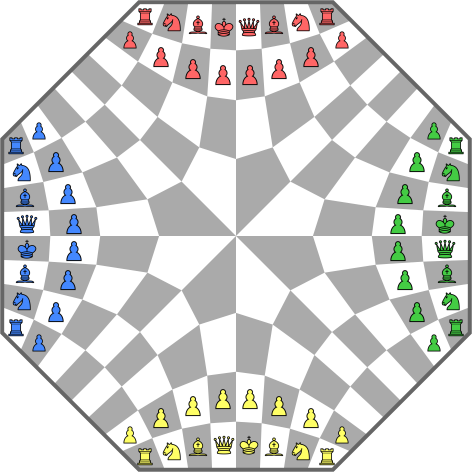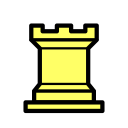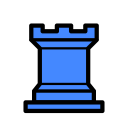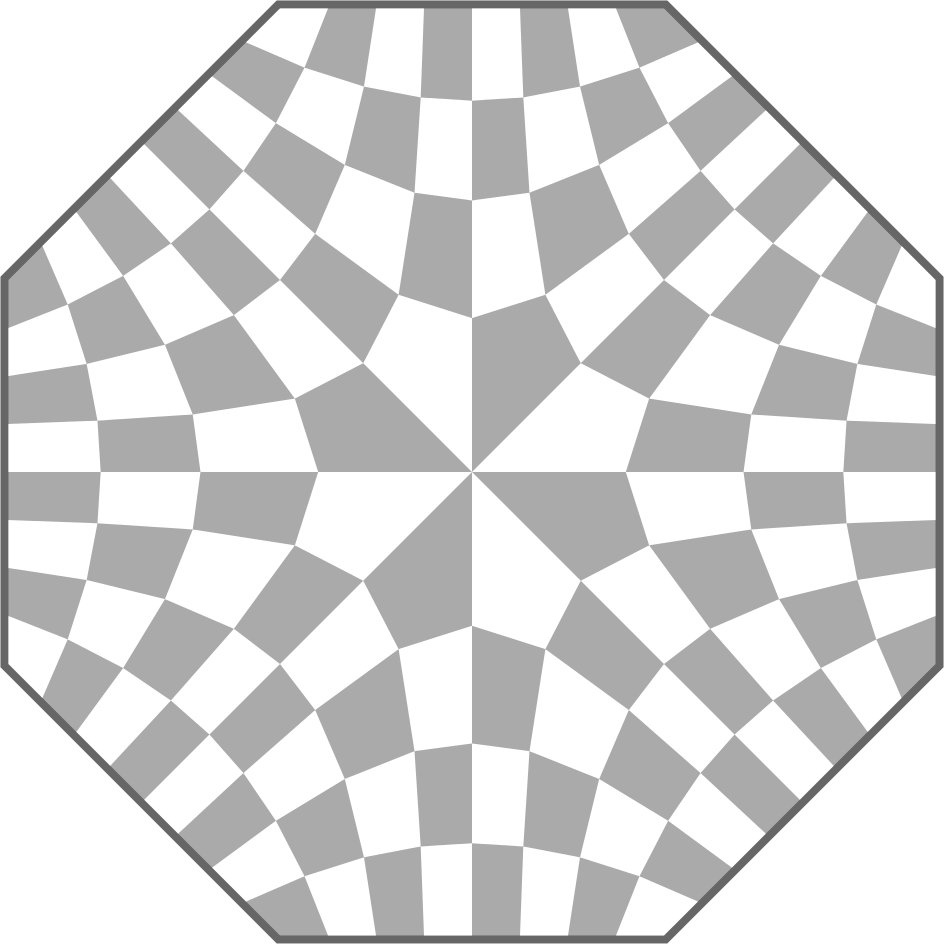
Four-Way Chess
Chess variant
Four-player chess variant played on an octagonal board.
The board can be created by deforming and joining four normal half-chessboards.
The game is played in two teams: Yellow and Red play against Green and Blue. Move order: Yellow, Green, Red, Blue.
The teams win and lose together. The game ends at the first checkmate, and the team whose member delivered the mate wins. The teammates cannot capture each other's pieces.
Details: Four-player chess.
The pieces move like in standard chess as far as it is possible. On each quarter of the board (4x8 fields) pieces move like in standard chess. The center of the board has special rules, which is detailed for every piece.
Rook






The rook – like in standard chess – moves along the gridlines of the board. This means that it leaves the fields on the opposite side when it entered. The direction of the rook is sometimes bending, and not the physical straight path.
Bishop







The bishop moves along the diagonals of the grid like in standard chess. This means that it leaves a field through the opposite corner to where it entered. This direction can also bend in this board.
The bishop always remains on the same field colour like in standard chess. When it arrives to the center, it can choose between two diagonals, which both have the same field colour, but neither of them is the physically straight direction.
Queen





The queen combines the power of the rook and the bishop.
King





The king moves to adjacent fields ortogonally or diagonally, except that through the center of the board it cannot move to all possible vertex-neighbours, only to the two beside the edge-neighbours. It can thus move in the same the directions as the queen, but only to one field distance.
Castling works the same way as in standard chess.
Knight







The knight, like in standard chess, moves one field in one orthogonal direction, then two in the other, or vice versa: two in one direction and one in the other. On normal chessboard, these two sequences have the same effect, but on this board around the center they may differ, and this may give more than eight possibilities to the knight.
The knight, like in standard chess, always moves to an opposite coloured field than it just left, and the possible destination fields form a more or less circular shape.
Pawn






A pawn always moves away from its own base, to one of the opponent's base. So from its own quarter-board it moves towards the center, and from another quarter it moves towards the edge of the board. The pawn, like in chess, moves in rook's direction, and captures in bishop's direction. When it captures through the center of the board, it has two options like the bishop.
Promotion and capturing en passant works similar to standard chess.